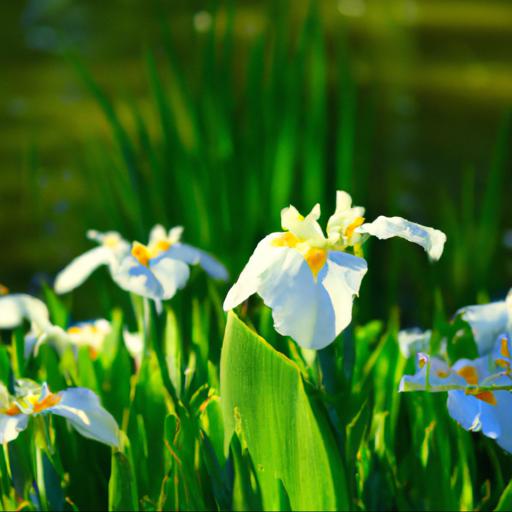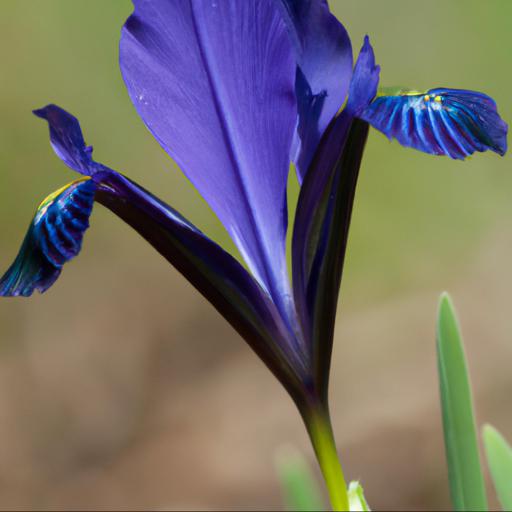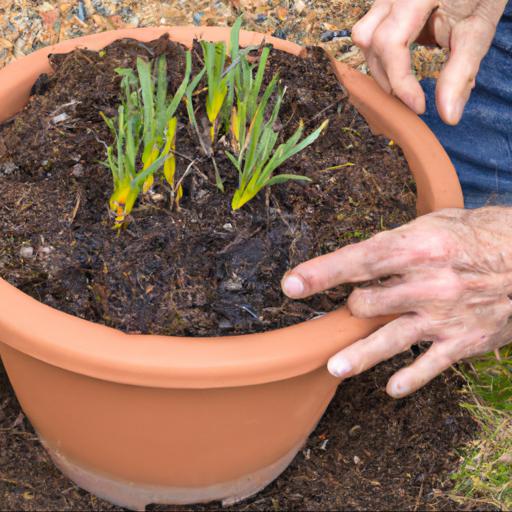The plant family Iridaceae is a diverse group of flowering plants that includes a variety of beautiful and unique species. These plants are found in many different parts of the world, from tropical rainforests to deserts, and they come in a wide range of shapes and sizes.
They are often characterized by their vivid colors and showy flowers, making them a favorite of gardeners and flower enthusiasts alike. In this blog post, we will explore the different species of plants in the Iridaceae family, as well as their many uses and benefits.
Characteristics of iridaceae plants

The Iridaceae plant family is a group of plants known for their dramatic and attractive flowers. As a UK garden expert, I’m often asked about ways to include this exciting family of plants in gardens.
Here, I will outline some of the most noteworthy characteristics of plants in the Iridaceae family, and highlight a selection of species that prove a perfect choice for any garden. Iridaceae plants are some of the most colorful and elaborate plants you can find in the garden. They are known for their large, showy flowers in vibrant shades of purple, blue, and yellow.
On the plant stalk, the blooms can be seen in many different sizes and shapes. They often have three petals on their top and three petals on their lower surface. The stems are sturdy and the leaves can grow evergreen or deciduous depending on the species.
Aside from the fantastic array of colors and shapes, Iridaceae plants also have some notable features that distinguish them from other plant families. Their flowers have a unique tubular shape, and some even have a scent which can be used for attracting pollinators.
Additionally, some species have underground storage tissue and are classified as geophytes. This means that their energy is focused on developing and producing bulbs instead of producing flowers, leaves and fruit.
Iridaceae plants are a great choice for any UK garden, as they offer strong visual impact and an exciting array of flower shapes and colors. Popular examples of Iridaceae plants include the freesia, gladiolus, and African iris. The iris genus is particularly diverse and covers a huge range of sizes and colors.
For example, German iris comes in numerous shades of blue, while Siberian and Japanese iris host stunning red and purple hues. The tall, graceful stems of the gladiolus flower and the delicate freesia with its sweet scent are also much-loved choices for UK gardens.
Common species of iridaceae

The family Iridaceae include a vast array of vibrant and beautiful blooms favored in flower gardens, from large evergreen shrubs to small grass-like specimens, and covers a wide geographical scope. While having many genera and species, some of the most familiar and widely grown garden plants belong to this family.
Orientale Iris is the species most often associated with the word ‘iris’. This could be any of the larger, often fragrant and flamboyant hybrids that have been bred since the early 20th century. The rhizomes of many oriental irises are sold with various names such as ‘Dutch iris’ and ‘German iris’, as well as traditional colors like blue, purple, and white.
Crocuses are also part of the Iridaceae family. One of the most popular types are the spring-flowering hybrids that bloom in a range of purples, blues, and whites.
With little or no leaves, ten or more individual flowers often appear in well-defined patches. The foliage is longer and more grass-like for the autumn-flowering varieties, and these are often more purple in color. If you’re looking to add a touch of drama to your garden, then gladioli are the perfect solution.
With tall spikes of flowers ranging from soft pinks and purples to vibrant oranges and reds, this famly of Iridaceae will provide a stunning display between late spring and late summer. Similarly, freesias and gladiolas are colorful additions to the garden and can create a stunning visual effect when planted together in a border.
From elegant, fragrant Iris to tropical Ixias, there are many plants from the Iridaceae family to choose from. These plants add texture, color and depth to any room in the garden, and can be arranged to create a show-stopping selection of blooms to suit any color scheme.
Growing and caring for iridaceae plants

As gardeners, many of us look for plants that will thrive both in spite of and because of our efforts. Iridaceae, or the iris family, provides many options to do just that!
Arguably the most beloved genus in this family is iris, with hundreds of varieties in colors, heights, hardiness, and bloom time to suit our every need. The qualities that have given iris its fame are many; beautiful and varied blooms, dependability, ease of care, and the way they naturalize and spread to soften hard lines in a landscape. Selection is the key to creating a successful flowering garden of iris, as well as proper design, soil preparation, and planting and care techniques.
Iris are usually planted as bulbs, or rhizomes, and although they can be planted any time during the growing season, spring and fall planting is preferred. They need full sun to partial shade, with most accepting some shade to partial shade periods during the heat of the day.
They must have well-drained soil, as standing water will rot the roots inevitably leading to death of the plant. Proper soil preparation is essential to how iris will grow and how often they’ll bloom. Improving the soil with generous amounts of organic matter will loosen clay soil and help with moisture retention.
Organic matter will also add nutrients to poor soils, and with regular fertilizing, your iris will love you! Planting at the right depth and with sufficient spacing is also important to keep in mind; an inch or two deep, six to nine inches apart. With these simple tips and information, you’ll have success with growing iris in your backyard!
Uses of iridaceae plants
The iridaceae plant family is bursting with potential when it comes to gardens in the UK. This versatile family of plants, also known as the irises, have a wide range of uses, from providing a beautiful burst of colourful foliage and flowers to creating soft, subtler tones.
With so many potential uses, iridaceae plants are the perfect addition to any garden. Iridaceae plants are available in a wide variety of shapes and sizes, making them the ideal choice for any garden layout. The iris family boasts beautiful bulbs, attractive evergreenness and even strong-growing wildflowers.
Most of them are perennial favourites, with some varieties flowering enthusiastically each year and others changing colour or shape depending on the season. All members can provide a great deal of colour and structure to a garden, whether used to create a border, as a ground cover, or cleverly integrated into other planting schemes. One of the greatest advantages of iris plants is their diversity.
As well as offering a variety of shapes and heights, they are capable of thriving in a range of climates and soils. Some species even function as both a shade-tolerant ground cover in addition to being a beautiful flowering border.
Therefore, it is possible to use these plants to create a garden tailored specifically to your own design tastes; adding pops of colour or creating subtle and muted tones depending on the purpose. Whether for something bold and colourful or a more subdued arrangement, you cannot go wrong with the versatility of iris plants.
With a wide range of uses, there is something for everyone in the iridaceae family, making them the perfect choice for any garden in the UK.
Our video recommendation
Final Touch
The Iridaceae family is a large group of flowering plants that includes a variety of perennial and annual species. These plants are known for their attractive and brightly colored blooms, most notably the irises. Iridaceae plants are found throughout the world, growing in a variety of climates and terrains.
They are easy to grow and require minimal maintenance, making them a popular choice for gardeners of all levels. Iridaceae plants are an excellent way to add color and beauty to any garden.
FAQ
What are the common characteristics of plants in the Iridaceae family?
The common characteristics of plants in the Iridaceae family include having showy flowers with three petals and three sepals, long, narrow leaves, and a rhizomatous root system.
What are some of the most popular species of plants in the Iridaceae family?
Some of the most popular species of plants in the Iridaceae family include Iris, Freesia, Crocus, Gladiolus, and Sisyrinchium.
How many genera are included in the Iridaceae family?
There are around 70 genera included in the Iridaceae family.
What are the main uses of plants in the Iridaceae family?
The main uses of plants in the Iridaceae family include ornamental purposes, medicinal purposes, and food sources.
What are the geographical distributions of plants in the Iridaceae family?
The Iridaceae family is widely distributed across the world, with species found in temperate, tropical, and subtropical regions. The majority of species are found in the Northern Hemisphere, especially in the Mediterranean region, Africa, and South America.
What are the common diseases and pests that affect plants in the Iridaceae family?
Common diseases and pests that affect plants in the Iridaceae family include rust, smut, leaf spot, and fungal diseases, as well as aphids, thrips, and whiteflies.

